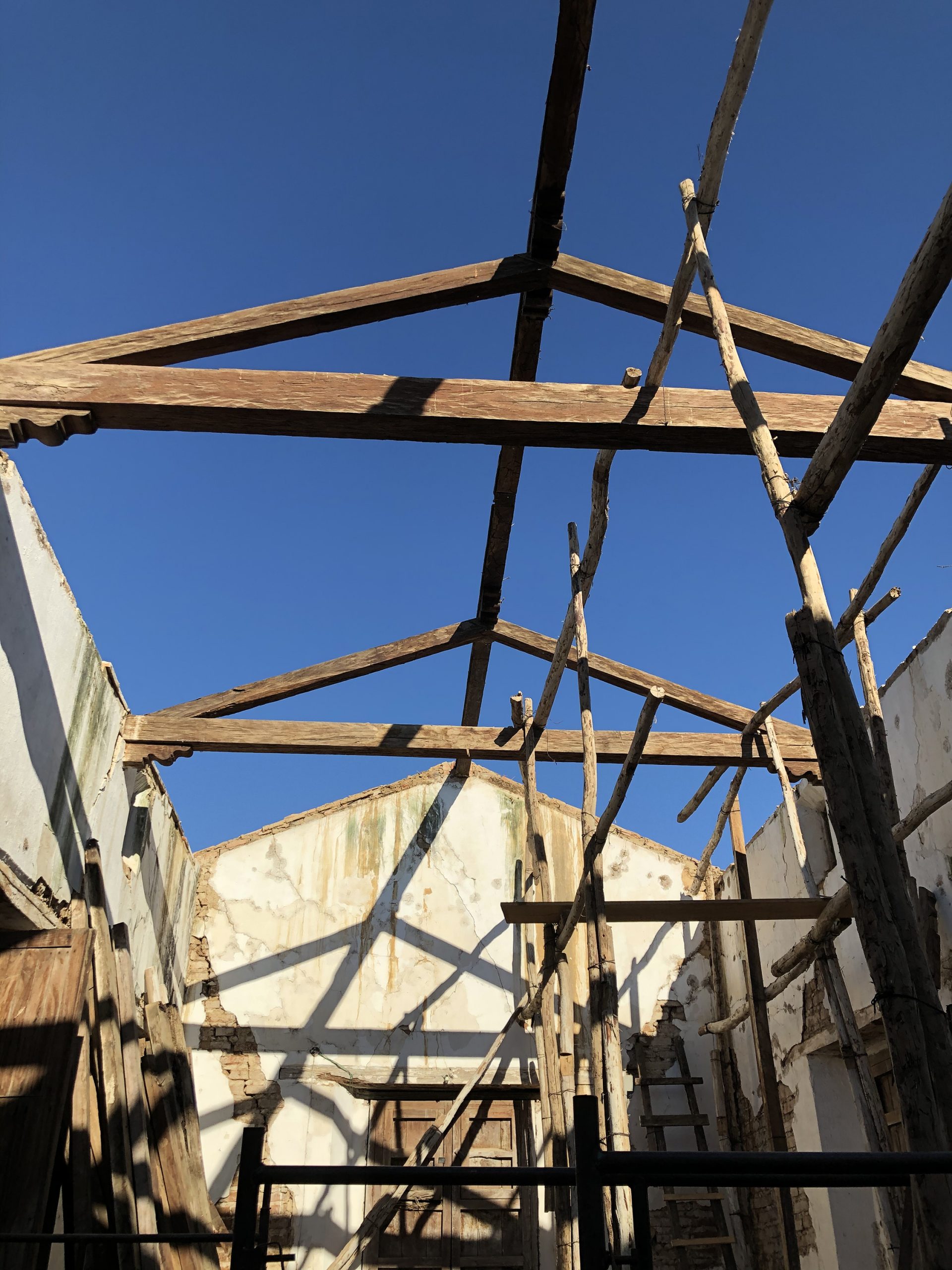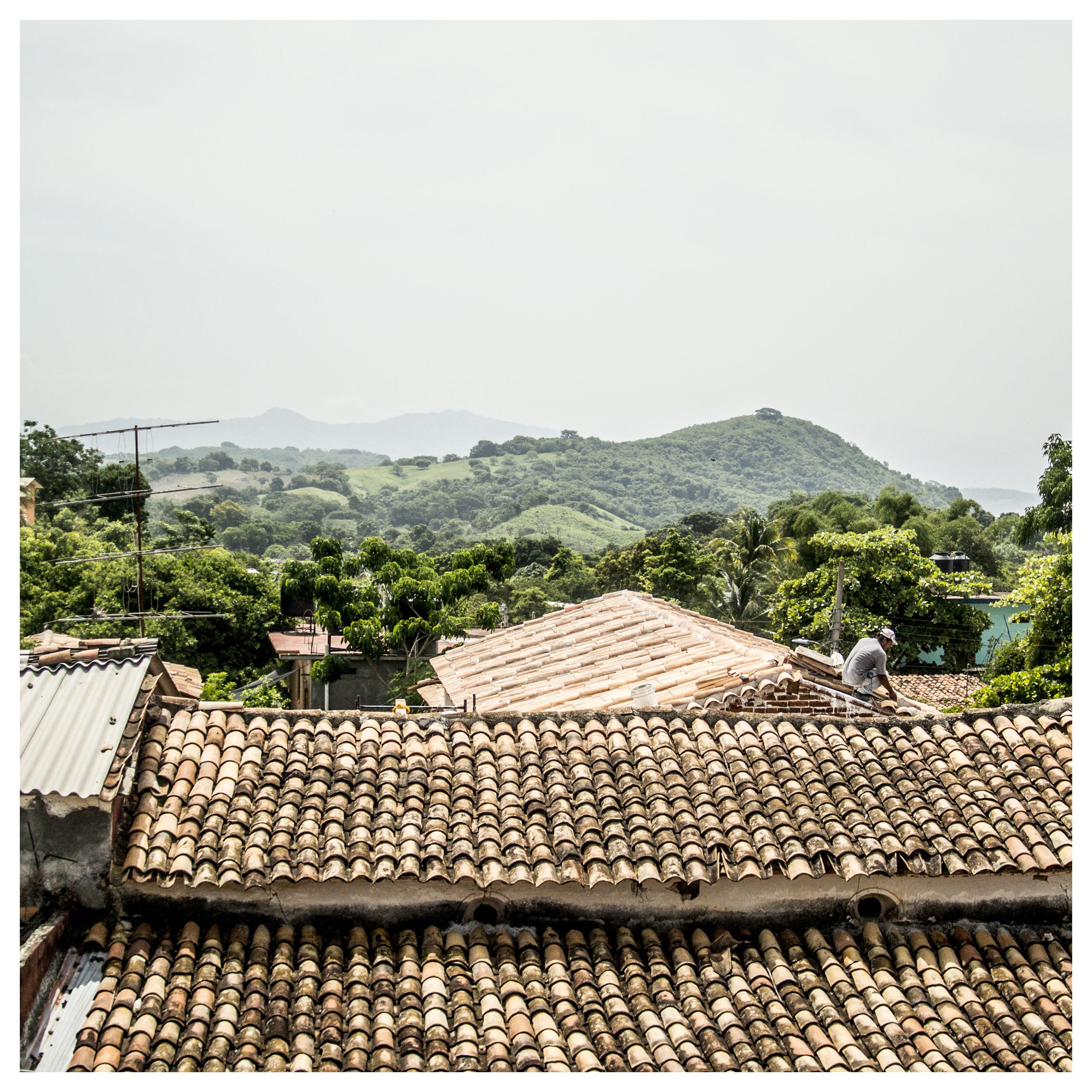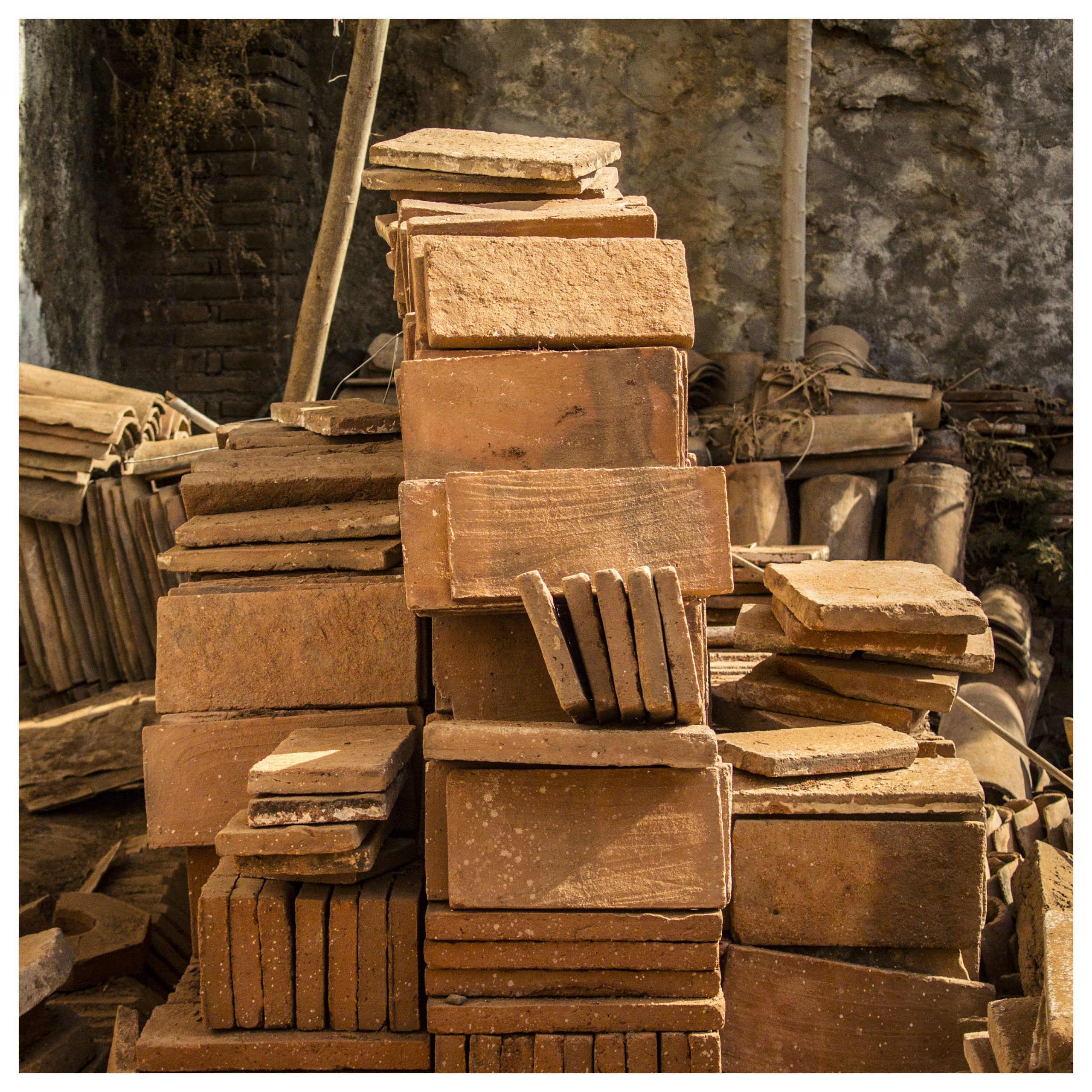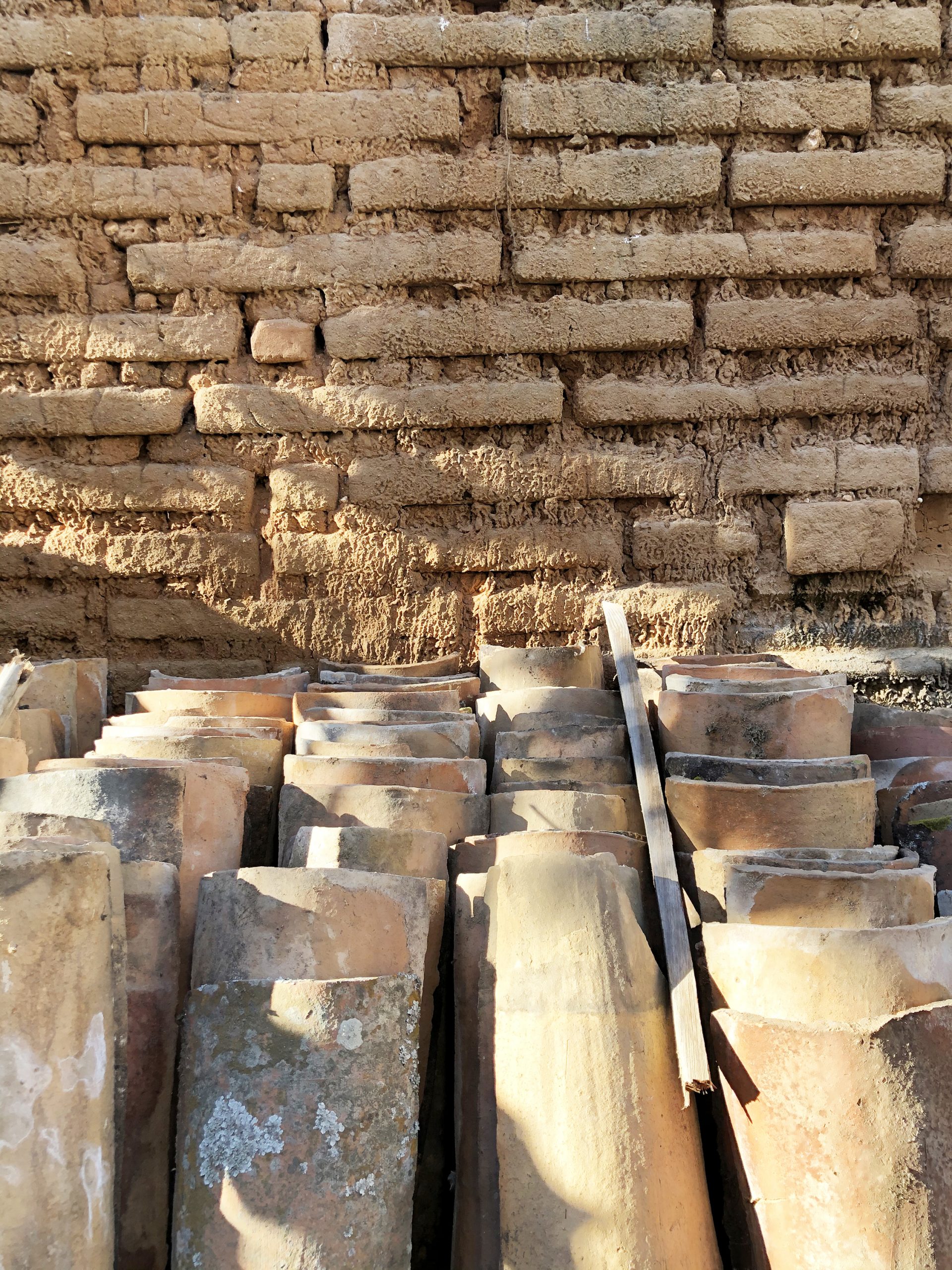
Roof Beams, 2020. Digital photograph. © Zoë Heyn-Jones.
Location(s): La Casona Antigua, Jamiltepec, Oaxaca, Mexico
Dates: Due to unforeseen circumstances, the installation, community screening, and workshops of the Built of Earth project will be postponed until Spring 2024.
“Whether a house is lively or not depends on the way it breathes. Houses and humans are both made of small balls of earth”— Trinh T. Minh-ha, Naked Spaces: Living is Round (1985)
Built of Earth is an experimental documentary project consisting of a short film, a series of photographs, a hand-drawn 16mm film loop, a publication, and a site-specific installation activated by community workshops that explores the immense and ancient family home at the centre of Jamiltepec, Oaxaca, Mexico. The cavernous adobe house is being restored after a devastating earthquake that saw a portion of its roof collapse in February 2018. The Casona is extremely significant, not just to the town of Jamiltepec, but to Gustavo Castro and his family who own and care for it. Built in the late 1700s, the house has held many shifting identities: from a home for the Spanish priests who ran the adjacent church, to a social hub of the town in which many stories and relationships unfolded, and now a contested family home and nascent cultural centre.

Desde lo alto, 2020, Digital photograph. © Octavio Castro Gallardo.
Before the earthquake, the Castro family had begun the process of turning the central space of the Casona—an immense chamber with ceilings 7 meters high and adobe walls 70 centimeters thick—into a community space. Hosting exhibitions by local painters, photographers, and artisans, and other cultural events such as fandango performances, Gustavo Castro and his wife, Queti Gallardo, had initiated an organic process of creating a cultural center, a space where they also hoped to run workshops for children and youth, offering an alternative form of engagement to the boredom and violence that seemed to be endemic to Jamiltepec.
On 16 February 2018, a magnitude 7.2 earthquake shook the southern Pacific coast of Mexico, particularly impacting the Costa Chica and Istmo de Tehuantepec regions of Oaxaca. Many people were left homeless or with a great deal of damage to their dwellings. The Casona was one such building: a portion of the roof collapsed. In 2019, they received the first increment of government funding to repair their roof. As they went through the process of applying for this aid, the Casona had been designated as patrimonio cultural, a heritage building. Throughout this process, the Castro family had decided to restore the house using traditional building materials and techniques, reusing as much of the original materials as possible and supplementing them when necessary with locally sourced contemporary versions. Luckily, the 70-centimeter-thick adobe walls of the monumental Casona had not been damaged. Having received funding to restore the unique building, rather than just patch the damage, the Castro family hired a team of local albañiles and set to work to completely de- and reconstruct the roof.

Esperando, 2020. Digital photograph. © Octavio Castro Gallardo.
In collaboration with Gustavo’s son, Mexico City-based architect Octavio Castro Gallardo, I have been documenting the restoration process on 16mm and Super 8 film and video, with audio interviews and field recordings, and through the collection discarded materials from the restoration, entering into a profound research relationship with the 200+-year-old adobe house and the surrounding community since 2019. A short experimental documentary film about the restoration process, a series of photographs by Castro Gallardo, and a collection of sculptural ready-made objects will form the basis of the site specific installation. A hand-drawn 16mm film loop by architect Diego García Rodríguez will show the Casona’s roof collapsing, reconstituting, and falling apart again, exploring cycles of death and rebirth, and highlighting the volume of the space as it loops over the immense roof beams. A publication in Ñuu Savi/Mixteco, Spanish and English will feature an experimental text by architect Ana Fabiola Lopez Zazueta contextualizing the project within the history of vernacular earthen architecture in Mexico, and will be designed by researcher-artist and editorial designer Beatriz Paz Jiménez. The installation will be activated by a series of community workshops on earthen building techniques with NGO Cooperación Comunitaria and artist collective Proyecto Yivi.

Adobe and Roof Tiles, 2020. Digital photograph. © Zoë Heyn-Jones.
We assert that there is a widespread devaluation of earthen building techniques and materials in the Costa Chica region of Oaxaca and Guerrero, Mexico—and indeed, around the country and the world. One of the primary aims of this project is to build interest in earthen vernacular architecture, especially among youth. Once prevalent in the region, few traditional adobe dwellings remain in Jamiltepec and across the Costa Chica region. The vast majority have been demolished, with communities rebuilding primarily with cinder block and concrete due to the fact that adobe and bajareque building techniques have come to have associations with poverty and dirtiness. We want to celebrate and revalorize these beautiful traditions, not only for their relevance as climate solutions, but for the artisanal knowledge and social choreographies that they hold, and for their appropriateness for the local seismic culture: the Casona in Jamiltepec has stood for literally hundreds of years because of these materials; they are resilient. They sway with the earth when tectonic plates subduct. They breathe with the ebbs and flows of the seasons, creating microclimates.
Built of Earth explores the complex notion of the ‘dream home.’ The Casona is imbued with, steeped in, and haunted by traces of actions performed by various humans and non-humans. Performance studies informs my thinking about how the Casona itself performs cultural memory; how the Casona has been the site of many types of cultural performances, formal and informal; and how it performs as an (in)animate entity, materializing various aspirations of its owners across time. It is a ‘dream house’ in that it manifests the dream of its current owner to perpetuate traditional building materials and techniques as an enactment of a regional cultural practice very much in peril of being lost. The Casona’s adobe and clay tile architecture stands in stark contrast with the concrete-block construction that surrounds it, other citizens’ dreams of permanence and modernity encroaching on and competing with the Castro family’s will to maintain a vernacular earthen architecture tradition.
A web-based iteration of the project will be hosted by Embassy Cultural House through their Intercambio/Exchange initiative that supports cultural exchange between Mexico and Canada.
We acknowledge the support of the Canada Council for the Arts.




